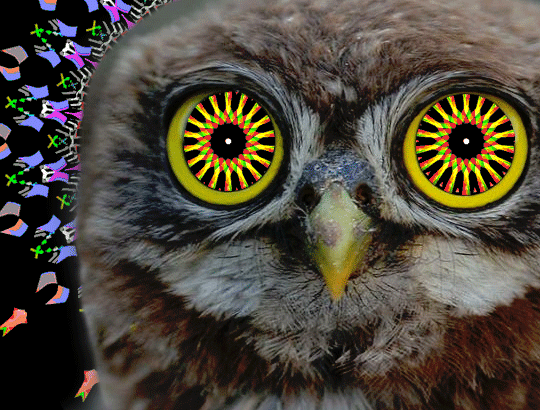Sedna is a dwarf planet in the outer reaches of the Solar System that is currently in the innermost part of its orbit; as of 2021 it is 84 astronomical units from the Sun, almost three times farther than Neptune. Spectroscopy has revealed that Sedna's surface composition is similar to those of some other trans-Neptunian objects, being largely a mixture of water, methane, and nitrogen ices with tholins. Its surface is one of the reddest among Solar System objects. To within estimated uncertainties, Sedna is tied with Ceres as the largest planetoid not known to have a moon.
For nearly all of its orbit, Sedna is even farther from the Sun than at present: its orbit is one of the largest in the Solar System other than those of long-period comets, with its aphelion estimated at 937 AU. 937 AU is 31 times Neptune's distance, 1.5% of a light-year (or 5.5 light-days) and well beyond the closest portion of the heliopause, which defines the boundary of interstellar space. (Eris and Gonggong are currently further from the Sun, at 96.0 AU and 88.3 AU, respectively, than Sedna at 84.7 AU (As of 2019), because Sedna is near perihelion.)
Sedna has an exceptionally elongated orbit, and takes approximately 11,400 years to return to its closest approach to the Sun at a distant 76 AU. The Minor Planet Center currently categorized Sedna as part of the scattered disc, a group of objects sent into highly elongated orbits by the gravitational influence of Neptune. This classification has been contested because its perihelion is too large for it to have been scattered by any of the known planets, leading some astronomers to informally refer to it as the first known member of the inner Oort cloud. It is also the prototype of a new orbital class of object, the sednoids.
Astronomer Michael E. Brown, co-discoverer of Sedna and numerous other possible dwarf planets, thinks that it is the most scientifically important trans-Neptunian object found to date, because understanding its unusual orbit is likely to yield valuable information about the origin and early evolution of the Solar System. It may have been tugged into its current orbit by a passing star, or perhaps by several stars within the Sun's birth cluster, or it may even have been captured from the planetary system of another star. There is also speculation that the clustering of the orbits of Sedna and similar objects may be evidence for a planet beyond the orbit of Neptune.
Comprehensive list of resources for those in need of an abortion :feminism:
Resources for Palestine :palestine-heart:
Here are some resourses on Prison Abolition :brick-police:
Foundations of Leninism :USSR:
:lenin-shining: :unity: :kropotkin-shining:
Anarchism and Other Essays :ancom:
Remember, sort by new you :LIB:
Follow the Hexbear twitter account :comrade-birdie:
THEORY; it’s good for what ails you (all kinds of tendencies inside!) :RIchard-D-Wolff:
COMMUNITY CALENDAR - AN EXPERIMENT IN PROMOTING USER ORGANIZING EFFORTS :af:
Come listen to music with your fellow Hexbears in Cy.tube :og-hex-bear:
Queer stuff? Come talk in the Queer version of the megathread ! :sicko-queer:
Monthly Neurodiverse Megathread and Monthly ND Venting Thread :Care-Comrade:
@aaaaaaadjsf @Abraxiel @Antilope @Alaskaball @AlexandairBabeuf @Arahnya @bbnh69420 @budoguytenkaichi @buh @Bunhead @CARCOSA @CDommunist @Cherufe @ClathrateG @ClimateChangeAnxiety @clover @comi @communistfuckface @ComradeCmdrPiggy @ComradeEchidna @context @CopsDyingIsGood @crime @DashEightMate @DasKarlBarx @DeathToBritain @Dirt_Owl @Downanotherday @Eco @ella @el_principito @EmmaGoldman @FunkyStuff @GalaxyBrain @GarfieldOfficial @GoroAkechi @Grownbravy @inshallah2 @JamesConeZone @Kanna @Kaputnik @Koa_lala @LeftistJerrySeinfeld @Lenins2ndAccount @LeninWeave @Lil_Revolitionary @marxisthayaca @MaybeNickCage @MelaniaTrump @Melon @Mindfury @Ness @plantifa @PM_ME_YOUR_FOUCAULTS @PorkrollPosadist @PurrLure @Ram_The_Manparts @Redcuban1959 @REallyN @Rem @RoseColoredVoid @Sandinband @SorosFootSoldier @TheGhostOfTomJoad @TrollBoy @ultraviolet @viva_la_juche @WIIHAPPYFEW @Wmill @wtypstanaccount04 @Yanqui_UXO @Zoift
@thelastaxolotl @Lydia @WhoaSlowDownMaurice
I, unlike the poster of two megas ago, do have the confidence to call all of you nerds :comfy-cool:
I'm not a nerd :kitty-cri-screm:
I am a dork, they are very different
Either way you're still cool though :meow-tankie:
I, unlike the poster of two megas ago, do have the confidence to call all of you nerds :comfy-cool:
I keep dossiers of potential dunk material on every poster on this site
spoiler
Or I just scanned through your posts from awhile back
No worries, all that matters is that it's been made :rat-salute:
My brother just asked me "Hey Maurice, would you be fine if I dated a woman who was black?"
:why-post-this:
And it's like um... why would I have some kind of problem with it? Does he think I'm a massive fucking racist or something??? And furthermore, even if I was racist like that, why tf would you seek my approval? Hell, why even ask me for it at all, it's his life, not mine??? That's just... what word even describes this?
Spectroscopy has revealed that Sedna’s surface composition is similar to those of some other trans-Neptunian objects, being largely a mixture of water, methane, and nitrogen ices with tholins.
:cat-trans: we do love our trans Neptunian objects here
That's like . So fucking far. Also that's mostly our water. You can't have it. - Canada (we are a different country and we like our great lake water where it is)
Edit: like, we lick the boot and all, but holy fuck do Americans not get that at the very least a deal needs to be made for this shit. Like that chud map where they just had troops plow through BC to Alaska to backdoor the Ukraine. They'd have to take a boat to Alaska, there is a border. We're a shitty country but normal international shit still applies for stuff like pipelining water or troop movement
Canadian trucker chuds got cold so the went to the nearest mall only to be told they are not allowed in without a mask. So many of them showed up the mall said fuck it and closed the mall. Now we have a sit in.
:michael-laugh:
It’s going to get cold there tonight. Some of the stupider chuds might actually freeze to death tonight.
Literally :freeze-peach:
:data-laughing:
my poor partner is literally being abused at her job i wish i could help her. her boss is a misogynist idiot that blames her for literally everything. Also has a meltdown with the least little bit of shit that goes wrong and lashes out at her. Really shitty situation :/
lol looking for work is such bullshit. All the advice is have you tried developing a skillset entirely separate from your career just for this? Also maybe travel back in time to college and be better at socializing with rich kids.
I'm gonna call off the stream today; doesn't feel like a good day to do so 🙁
Might do it next wednesday instead, we'll see
Sat down on the toilet and a whole burrito bowl I ate a couple hours ago fell out of me undigested.
Thanks body, I didn’t need nutrients anyway.
:doomjak:
I have IBS.
Recently got out of a relationship with an American leftist. She had a list of odd takes like "fitness culture is fascism" that I used to think were jokes until I eventually found out she was being serious.











